“When an old person dies, it’s like a small library burning.” — Alex Haley, author of Roots, spoken to his friend John Rice Irwin, founder of the Museum of Appalachia[i]
Until I went to Knoxville, Tennessee, I hadn’t experienced a place with such a strong sense of preserving the past. Not just the events or places of the past – I work as a tour guide in Philadelphia and we have that here – but the importance of each individual life gone by, of each individual story woven into the fabric of our country’s history. In several museums, treasure troves of old daily use items – what many of us would probably unthinkingly call ‘junk’ – are raised to new levels of poignancy. I was impressed by the sheer volume of the collections, each artifact a droplet in a momentous ocean tribute to the ingenuity and tenacity of Tennessee’s earlier citizens. While I don’t have ancestors who lived in Tennessee, I found myself aching for the opportunity to reconnect with my grandparents, to link back to past generations. What stories would an antique sewing machine or rough-hewn farming implement bring up for them? While I imagine much of their daily tasks involved toil and drudgery (I’ll take a washing machine over a washboard any day), part of me longs for a less technological life with the satisfaction of physical labor, time outdoors, and being in the present moment with simple pleasures. The benefit of visiting Knoxville is a chance to experience vicariously what life was like back in the day while still enjoying the comforts and conveniences of today.
At the East Tennessee History Center, we watched an introductory film to the museum’s signature exhibit, Voices of the Land: The People of East Tennessee. One of the people interviewed talked about being relocated in the 1930s for one of the TVA projects. I think it was a mother lamenting that she would have to leave the land where her children were buried. Not having any actual tie to soil of a particular place myself, thinking about a mother having to move away from her children’s graves helped me to understand the bond a little better. Several interviewees commented on the importance the actual land held for them. I’m not sure why this is – maybe because the people in the mountains of Tennessee were isolated for so long; the land was their one constant companion. I suppose it took a particular type of rugged, independent soul to make his or her way out to the mountains of Tennessee – land fantastically beautiful and cruelly harsh at the same time – and survive. Mother Earth challenges and blesses us, just like our own parents.
The History Center offers a recreation of an old-fashioned street complete with pharmacy (an ad for ‘bitters’ promotes my favorite digestive remedy), dentist office, and trolley car. A prominent display item is Davy Crockett’s first gun, ‘Betsy,’ a rifle which he traded for a horse so that he could get married. Another exhibit highlights Tennessee’s role as the state whose approval made the three-fourths majority necessary to ratify the 19th Amendment. Congressman Harry Burn surprised everyone when he supported granting women the right to vote under pressure from his widowed mother. Country and bluegrass music are covered as they and many other genres got their start in Eastern Tennessee. I loved the early pictures and costumes of Dolly Parton! Other stories focus on mountain people who played up the hillbilly stereotype for tourists and then put their children through college with the money they earned and on Jack Huff who built a wooden chair he could fasten on himself like a backpack to carry his mother seven miles up Mount Le Conte to see the sunset.
Onsite at the History Center is a beautifully restored federal courtroom from 1874 as well as the comprehensive Family History and Genealogy Department of Knox County Library whose resources are offered to visitors for free. The East Tennessee Historical Society which oversees the Center runs several projects to bring back voices from the past: First Families of Tennessee (to honor the state’s first residents and to identify their descendants); Civil War Families of Tennessee (to link current descendants with their Civil War ancestors, encourage new research, and more fully tell the story of the Civil War in Tennessee); and In Death Not Divided, Burial Places of East Tennessee Civil War Soldiers (to locate and identify burial sites of East Tennesse Union and Confederate Civil War soldiers). Anyone with a serious interest in genealogy should check it out. Their resources are particularly comprehensive for Tennessee, the south, and Civil War in the area, but also include records from all over the country.
East Tennessee Historical Society Director Cherel B. Henderson shared with us that one of the photos in the montage encircling the exhibit room is of her cousin, one Hazel Davidson, who was also known as the ‘Madame to the Stars.’ She brought her little dog to jail with her. It’s the voices of people, their stories, that make history accessible and universal, and the Eastern Tennessee History Center organizes the storytelling masterfully – while giving visitors the opportunity to delve into their own histories.
At the Museum of Appalachia, the director, Elaine Irwin Meyer, explained that today we’d probably call her father – museum founder John Rice Irwin – a hoarder. (A friend of mine from Tennessee said that when she was a child, they called it trading.) His fantastically extensive collection of over 250,000 artifacts became the museum in 1969. It showcases absolutely everything from early mountain life in the Appalachia, including actual log cabins with furnishings (Mark Twain’s early childhood home and Daniel Boone’s dwelling among them) that were transported from their original locations. It was fascinating to walk through and imagine what it must have been like to actually live in them. I loved the Little House on the Prairie books when I was growing up, but I think my romantic ideas of log cabin living would dissolve the first time a layer of snow made it through the roof cracks on to my bed cover or I had to crack the ice in the basin before washing my face. The smallest structure on the grounds is Tom Cassidy’s tiny 8’x8’ one room house, where he lived until his death in 1989. (The first place I lived in when I moved to Philadelphia was a 9’x9’ room in a house, but at least I had use of the kitchen, bathroom, and living room!) It seems he was pretty content with his home. How much space do we really need?
In addition to the building exhibits which also included a church, jail cells, and child’s playhouse, I was fascinated by the collection of coffins and other funeral accouterments as well as the mandolin display (my cousin Butch played mandolin and lived in Nashville before he died). An area devoted to artifacts from the colonial period and Revolutionary War was fascinating but incomplete as it was under construction or renovation. The number of daily use items for viewing is staggering, and any one thing represented has several examples. Given that the mountain communities were isolated much longer than most of society, it makes sense that many of these items would still be around as they were being used there more recently. The museum is a tribute to the ingenuity, independence, persistence, and sheer hardiness of the people in the Appalachian Mountains. I was really impressed.
In Norris Dam State Park is located the Lenoir Museum Cultural Complex* which contains the Will G. and Helen H. Lenoir Museum, another personal hoarder/trader collection donated by Will G. It is simply incredible! It culls together eclectic objects such as birds nests, bee hives, snake skins, sea shells, ocean sponges, worn shoe boots, Confederate money, antique sewing machines, looms – and the list goes on and on. Interesting that even the items saved from nature were things abandoned after they outwore their usefulness. It’s the ‘worn’ that tells the story – well-used, well-lived. Of particular note is an intricate barrel organ in which a German newspaper from 1826 was found. We didn’t see a demonstration, but it is capable of playing 10 songs while 44 different figures perform.
A highlight of the visit was getting to meet Henry Lenoir, the son of the original collector. I could have listened to him all day! He was so lively and entertaining as he told us where his father obtained some of the pieces. Funny to think that most of the objects in the museum were in his house when he was growing up! Unfortunately we met him as we were leaving, so we didn’t get to stay and listen to him as long as we would have liked. We did however have time to model the native American jacket and pose with the drums he was bringing in to display at the museum! How long ago is the past when the worn things can still be used?
The Complex also has a picturesque 18th century rice grist mill and threshing barn. Great photo opps! We got a tour of the mill with its history and an explanation of how it worked. Right now it needs a new clutch – one from a Camaro car will do – but we did get to manually start it up to see how the gears all interact. There are also easy hiking trails around and scenic views of the Norris Dam. Well worth a visit!
‘Hoarder’ museum seems like the best way to convey the sheer volume of artifacts in these collections – it does really seem like nothing was thrown away – but I don’t mean it in a disrespectful way. I was really touched and humbled by the time, effort, and care that went into obtaining and maintaining the collections. There is something really poignant about preserving these well-used objects of the past, holding on to their stories because there was a story. I’ve moved around a lot in the last 15 years or so, and each time I purge. I think of it as cleaning out the clutter – too much stuff makes me feel anxious, particularly since I don’t have a permanent place to store it in. It’s easier to travel light! But after visiting Knoxville and these personal collection museums, I have a new appreciation for the history of daily use objects and the memories they hold – whether we actually remember them or not. I feel a deeper connection to my grandparents, to my family, to all of the early settlers who forged ahead so our lives would be easier. I feel gratitude.
Disclosure: My trip Knoxville, TN, was made possible by the Tennessee Department of Tourist Development. My opinions and perspectives are totally my own — as always
Quick Video — Lenoir Cultural Complex: Getting the wheel at the grist mill to turn (1) It really gets going (2)
* Lenoir Museum Cultural Complex is open Wednesday-Sunday, 9 am – 5 pm.
[i] Henry Hurt, “A Man and His Museum,” Reader’s Digest reprint, June 1986.

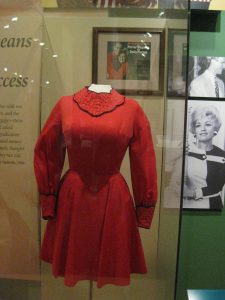
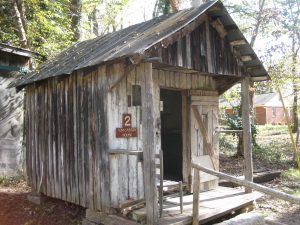
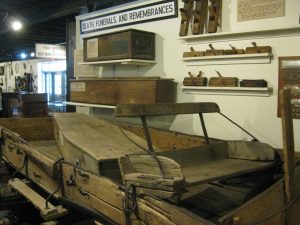
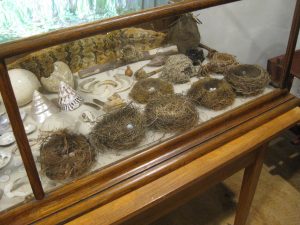
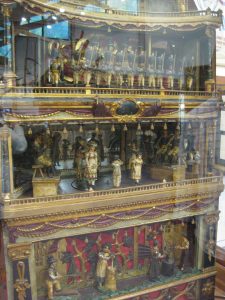
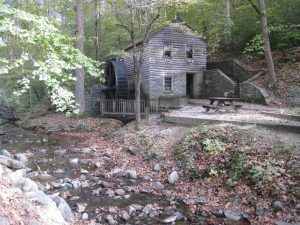
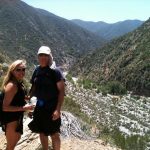
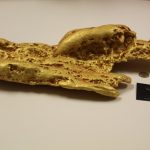

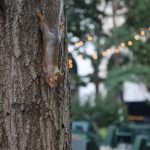


Very good article, Marianne. I’ve been to Memphis twice to visit Elvis’ home. Nashville, twice too. I enjoyed my time in both cities, along with the southern culture and cuisine. I wish I knew about Knoxville as you you wrote about it in your article. Next time we’re passing through Tennessee on our way to visit family in Huntsville, AL – we’ll visit Knoxville. Thanks for the info.
M and G
Rome, Italy
Excellent article! What a talented & insightful writer!!
Thanks to you both for reading! And Michael – I’ve been to Memphis and Nashville too, loved them, but I didn’t have the luxury of exploring them in as much depth as I did Knoxville.
To contact the Lenoir Museum, call 865-494-9688.
I worked for Hazel Davidson around 1986/1987 ..she was an amazing woman and had some stories..she started her first cathouse in Florida after the murder that she was a suspect..she was living on Hoitt Avenue when I worked for her..at the time she was writing a book on her life and I disappeared and I know what happened to it..the black book all these people are talking about isn’t a black book but instead a book that was kept in then kitchen drawer that each girl had to write down how much money we made ..I can tell u all about it ..the drug use..the raid..her stories..my stories..the girls and everything.
Angel , are you on social media. Particularly Facebook? I am doing research on Hazel and would love to speak with you more.
Yes I am on social media.. Facebook is under Susie Reroll Darling I live in Asheville NC now ..but yeah that would be fine..she was one spunky lady..
I’m sorry I’m Angel that worked for Hazel I’m on Facebook under Susie Reroll Darling and I would love to talk to you..